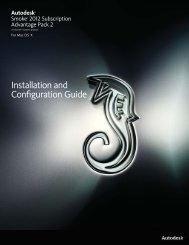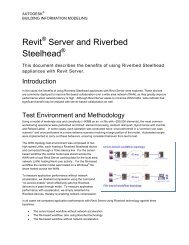Installation and Configuration Guide for Linux® Workstations
Installation and Configuration Guide for Linux® Workstations
Installation and Configuration Guide for Linux® Workstations
You also want an ePaper? Increase the reach of your titles
YUMPU automatically turns print PDFs into web optimized ePapers that Google loves.
7 If prompted, initialize the system disk. The test of the installation is automatic.<br />
8 When the installation has completed, eject the disc <strong>and</strong> reboot the system. After the system reboots, you may be<br />
prompted by the Kudzu hardware setup utility to set up new hardware detected <strong>for</strong> your system. You can ignore<br />
these prompts <strong>and</strong> allow the utility's count-down to expire since the hardware <strong>for</strong> the system is unchanged.<br />
9 Boot into your new Linux installation <strong>and</strong> change the root password: Login as root, with the default password<br />
password. In a terminal use the passwd comm<strong>and</strong> to change the password.<br />
10 By default the time zone is set to EST. To change it, login to the desktop as root, right click on the clock, <strong>and</strong> select<br />
Timezones.<br />
11 Configure basic network settings (page 24).<br />
12 Configure an InfiniB<strong>and</strong> Card (page 25)<br />
13 Install the DKU <strong>and</strong> the AJA OEM-2K firmware (page 25)<br />
14 Configuring Storage (page 26)<br />
Configure basic network settings<br />
Login as root to edit the files described below in a text editor, <strong>and</strong> reboot the system <strong>for</strong> the new configuration<br />
to be used.<br />
You'll need the following from your network administrator:<br />
■ A unique static IP address <strong>and</strong> host name <strong>for</strong> your system<br />
■ The network gateway IP address.<br />
■ The subnet mask of your network.<br />
■ DNS server IP address(es).<br />
/etc/sysconfig/network<br />
Sample snippet from /etc/sysconfig/network.<br />
NETWORKING=yes<br />
HOSTNAME=workstation1<br />
GATEWAY="10.1.0.25"<br />
The GATEWAY value is used if no GATEWAY is defined in a network port’s configuration file.<br />
/etc/resolv.conf<br />
Sample snippet from /etc/resolv.conf<br />
nameserver 192.9.201.1<br />
/etc/hosts<br />
You may need to edit the loopback setting which may look like 127.0.0.1 vxfhost.localhost.localdomain<br />
localhost by default. Optionally add hostname / IP address pairs <strong>for</strong> other workstations on your network.<br />
Sample snippet from file:<br />
24 | Chapter 4 Install Linux<br />
127.0.0.1 localhost.localdomain localhost<br />
192.168.0.100 workstation1




